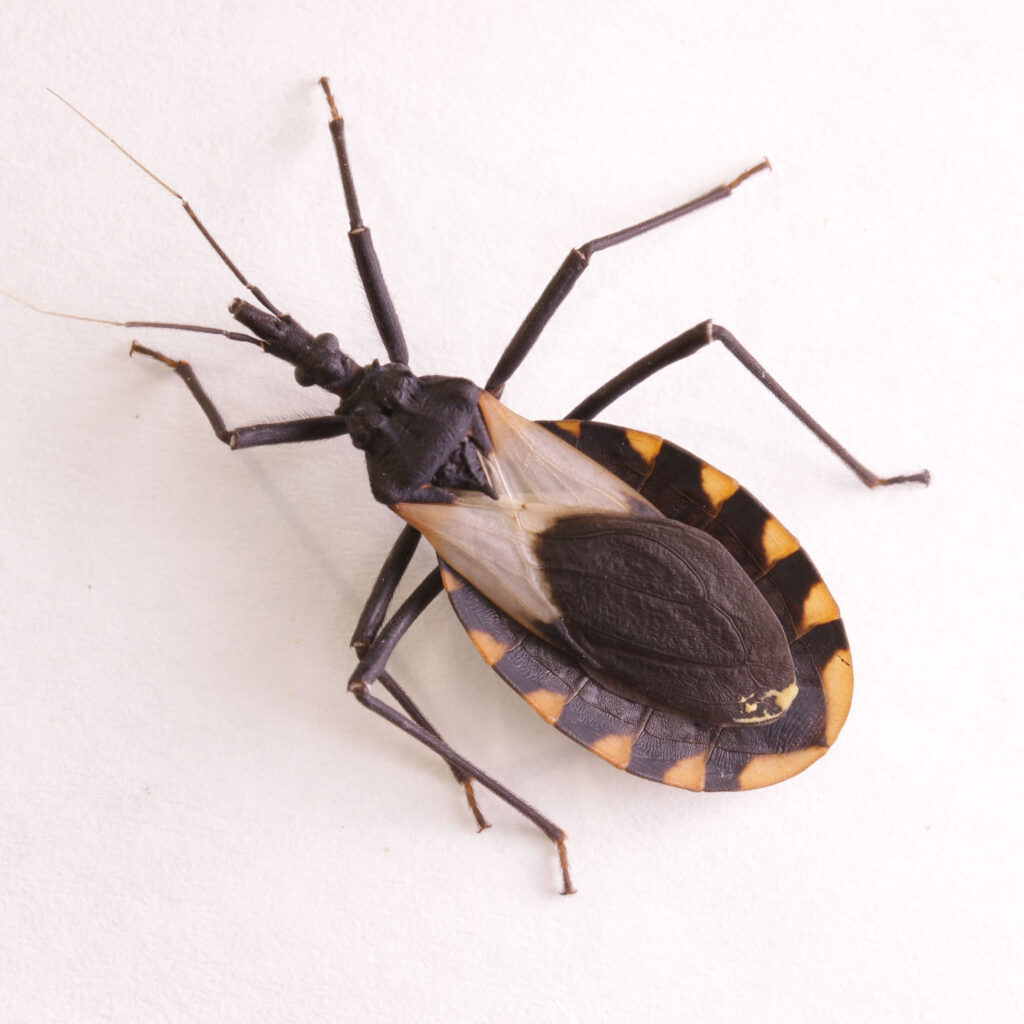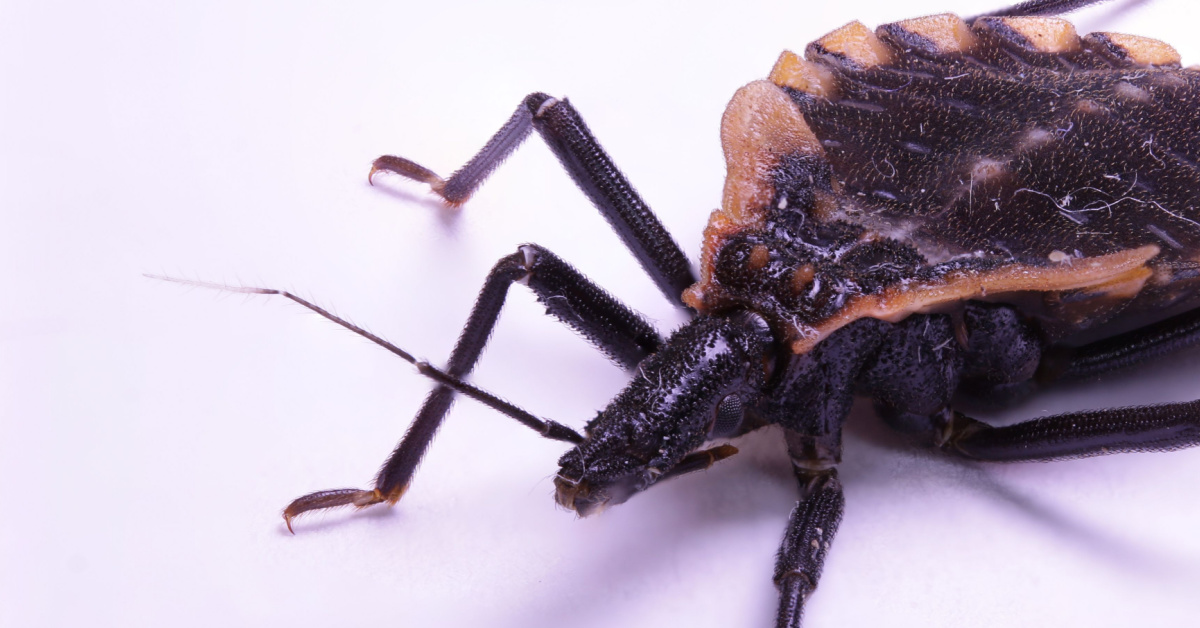Chagas disease, caused by the parasite Trypanosoma cruzi, is a life-threatening illness that affects millions of people worldwide.1 The primary mode of transmission is through contact with the feces of infected blood-sucking insects known as kissing bugs.2 These insects reside in the walls of poorly constructed homes, primarily in rural or suburban areas. When a kissing bug bites a person, it defecates near the bite site, allowing the parasite to enter the body when the person inadvertently smears the feces into the bite, eyes, or mouth.3 Unfortunately, the symptoms of Chagas disease may not manifest for 10 to 30 years, leading to a significant number of undiagnosed cases.
The Effects Of Chagas Disease

Often referred to as a “silent and silenced disease,” Chagas can cause severe heart damage in up to a third of the infected individuals, potentially leading to progressive heart failure or sudden death. Additionally, some patients may experience abnormal enlargement of the colon or esophagus, affecting approximately 10% of those infected. It is estimated that Chagas disease claims the lives of approximately 12,000 people annually, making it the deadliest parasitic disease in Latin America, surpassing even malaria.
The Origins and Global Impact of Chagas Disease

First identified by Brazilian physician and researcher Carlos Ribeiro Justiniano Chagas in 1909, it is endemic in 21 countries in Latin America and has also been detected in North America, Europe, Japan, and Australia. Recognizing the severity of this neglected tropical disease, the World Health Organization (WHO) included Chagas on its list of targeted diseases for elimination by 2030. However, despite its global prevalence, Chagas remains relatively unknown among healthcare providers and the general public.
What Research Is being Done about Chagas Disease?

The low case detection rate, estimated to be around 10%, poses a significant barrier to accessing treatment and care, as well as preventing transmission. Currently, only 30% of individuals with Chagas disease receive a proper diagnosis, leaving approximately 75 million people worldwide at risk of infection.
Read: Parasitic worm populations are skyrocketing in some fish species used in sushi
Overcoming Treatment Challenges: The Alchemy of Chagas Medications

The treatment of Chagas disease primarily relies on two medications: benznidazole and nifurtimox.4 However, both drugs were developed over 50 years ago and can have severe side effects, particularly in adults. Early administration of these medications after infection is crucial for their effectiveness. While benznidazole and nifurtimox have the potential to cure infected infants, their impact on adults is less certain, though they can help prevent or slow down disease progression. Unfortunately, the drugs themselves are “toxic, unpleasant, and not particularly effective“, say experts such as Professor David Moore, a consultant at the Hospital for Tropical Diseases in London.
The lack of financial incentives has discouraged pharmaceutical companies from investing in the development of new drugs, further exacerbating the challenges in Chagas treatment. To address these issues, initiatives such as the Chagas hub, increase testing, treatment, and risk management, particularly in high-risk populations, such as pregnant women.
The Road Ahead: Battling Chagas Disease

Despite the efforts of dedicated researchers and healthcare providers, progress in combating Chagas disease has been slow. The ongoing COVID-19 pandemic has further impeded advancements in diagnosis and treatment, making the WHO’s elimination target by 2030 a significant challenge. Professor Moore expresses doubts about the likelihood of meeting this goal, given the limited interest in addressing a neglected tropical disease like Chagas.
Nevertheless, initiatives like the Chagas hub have made strides in testing and diagnosing individuals at risk, with the hope of expanding screening programs, particularly in antenatal clinics serving Latin American patients. As the field of eco-epidemiology explores the intricate relationships between ecology, environment, and human and animal health, ongoing research into Chagas disease and kissing bugs aims to enhance our understanding of disease transmission and develop effective prevention strategies to protect both people and animals.
What More Can Be Done?

In conclusion, Chagas disease and its transmission by kissing bugs present a significant global health challenge. Despite affecting millions of individuals worldwide, the disease remains largely unknown and neglected. The urgent need for new treatments and interventions to combat Chagas disease is apparent, yet financial constraints hinder progress. However, dedicated healthcare providers, researchers, and community initiatives are working tirelessly to improve detection, treatment, and prevention. By raising awareness and addressing the barriers to access, we can hope to make significant strides in eliminating Chagas disease and protecting vulnerable populations from this silent and neglected threat.
Keep Reading: 7 Signs Of Intestinal Parasites Living Inside Your Body
Sources
- “‘The silent disease’: Chagas is a killer. Now carriers want their voices heard.” The Guardian. Sarah Johnson. January 2023.
- “Chagas Disease.” Cedars
- “KISSING BUGS & CHAGAS DISEASE IN THE UNITED STATES.” Kissing Bug
- ” What Are Kissing Bugs? Everything You Need to Know About Them and Their Bites.” Healthline. Rachel Nall, MSN, CRNA. August 31, 2021

